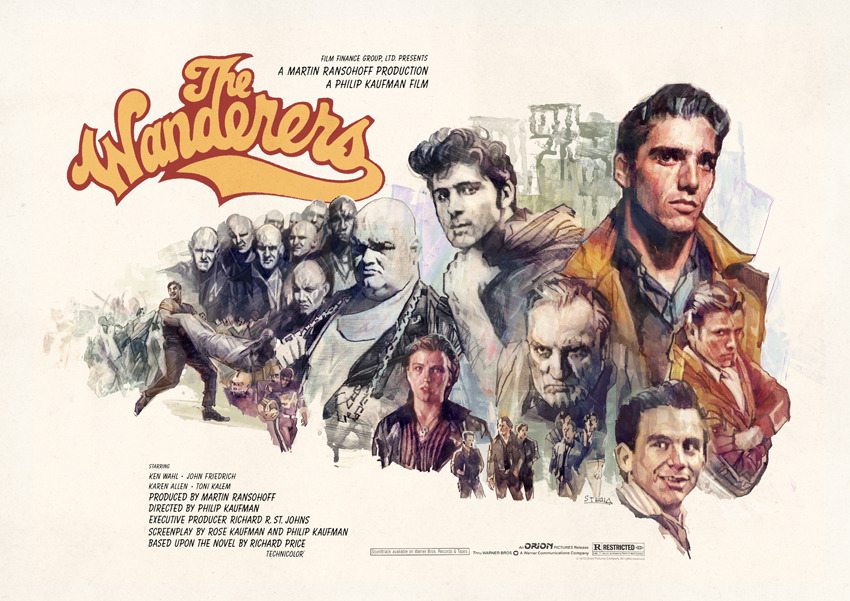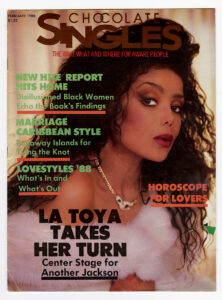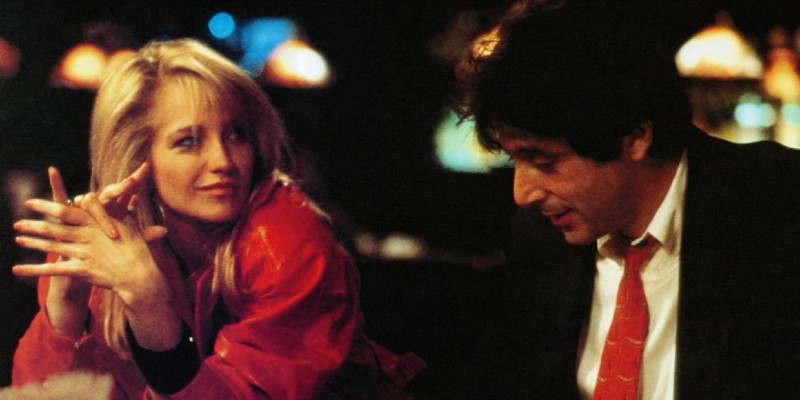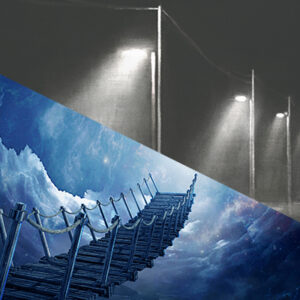The first time I heard the gorgeous swoon that is the song “Sea of Love” was in 1984 when former Led Zeppelin vocalist Robert Plant formed the throwback band The Honeydrippers (a one-off group that included guitarist/co-producer Nile Rogers, keyboardist Paul Shaffer, bassist Wayne Pedzwater and drummer Dave Weckl) and released their remake as a first single. Sung in a sorrowful, soulful style, “Sea of Love” was sweet and spooky in the way that only a ballad penned and recorded in the doo-wop 1950s could sound.
The original version was written and performed by Louisiana native Phil Phillips, a hotel bellhop who composed the track for sweetheart crush Verdie Mae Thomas. “I had my guitar, so I went and wrote this song,” Phillips told The Billboard Book of One-hit Wonders author Wayne Jancik. “You see, she really didn’t believe in me. But I felt if I could sing about it, a sea of love, you know, where it’s quiet and peaceful, I could really show her how much I loved her and cared for her.”
Though Phillips never got the girl, in the summer of 1959 he had a hit record, one that would become a much covered (B.J. Thomas, Iggy Pop, Cat Powers) classic. I can imagine then-10-year-old Bronx boy Richard Price with a transistor radio pressed to his ear listening to the song in his bedroom. Decades later when that boy was a man who became a novelist and screenwriter, Price was obviously still haunted by the track when he began working on the serial killer/lonely hearts thriller that he titled Sea of Love. Using the song as a plot device (a murderer of men leaves the song playing on the turntable of the first victim), the movie was dark as the killers’ heart.
A fan of Price’s work since my messenger days roaming through Manhattan bookstores where I discovered his early novels The Wanderers (1974), which was more like a collection of similarly themed short stories than a traditional novel, Bloodbrothers (1976), Ladies Man (1978) and The Breaks (1983), his work was literary without pretension, the kind of writing that could be enjoyed by both uptown and downtown people reading on the subway.
Five years after The Wanderers debuted, it was adapted to film by Philip Kaufman, who co-wrote the script, with his wife Rose, about a gang of wild boys in the boogie down Bronx. The couple took significant liberties with Price’s text, though he didn’t seem to mind. “I love that picture,” he said. “It’s not my book and I don’t care. The spirit is right and the way Phil Kaufman directed it showed me another way of looking at my own book.”
Still, I imagine that Price’s experience also made him want to take up the trade of screenwriting himself, hoping that would give him more control over his adapted material.

In 1986 Price transitioned to movies when he debuted with The Color of Money, the Martin Scorsese directed sequel to the pool player classic The Hustler. Cool flick, though it’s funny that these two hardcore New Yorkers collaborated on a film shot mostly in Chicago. Though they’d make up for it later with the brilliant “Life Lessons (1989),” a short film about an angst ridden SoHo painter (Nick Nolte) included in New York Stories, the anthology film consisting of three segments; the other two were directed by Woody Allen and Francis Ford Coppola.
A couple of years later Price began creeping over to the neo-noir side of writing in both his screen work (Sea of Love, Mad Dog and Glory) and novels (Clockers, Freedomland). Indeed, when the trailer for Sea of Love, starring Al Pacino and Ellen Barkin was shown in the summer of 1989, I was pleased to see Price venturing into those mean streets.
Sea of Love also served as the anticipated comeback vehicle for Pacino, whose biggest hit of the decade was the cocaine, bullets and blood frenzy of Scarface (1983) six year before. I had come of age viewing Pacino’s 1970s classics Panic in Needle Park, Dog Day Afternoon and Serpico, and considered myself a fan. However, a decade later, besides Author! Author! (1982) and Scarface, I wasn’t really checking for him. Apparently I wasn’t the only one since his big budget period piece film Revolution (1985) was the biggest flop of his career.
Afterwards Pacino chose not make movies for four years. In fact the crazed Sea of Love cop character Frank Keller (a hard drinking, paranoid divorcé) was originally written for Dustin Hoffman. In the book Color of Money, Sea of Love, Night and the City: Three Screenplays (1994), Price told interviewer Neal Gabler, “Hoffman approached me after Color of Money saying ‘I’d like to work with you.’ And I told him I had this idea for Sea of Love, which was basically coming off one of my novels, Ladies’ Man, about how an urban male deals with sexual longing and loneliness. I figured, ‘I know how to get Ladies’ Man made into a movie. I’ll give the guy a gun.’
“Hoffman got sidelined on Rain Man, and he asked me to come on Rain Man for a rewrite. That was an unhappy experience. It was one of those you-can’t-fire-me-I-quit situations. So then he pulled out of Sea of Love. Everybody loved Sea of Love because Dustin Hoffman was attached. Dustin Hoffman pulls out, all of a sudden, nobody loves it anymore. The words didn’t change, but we lost our five-hundred-pound gorilla. And so it lay there for a year. The minute Pacino came on board, our new five-hundred-pound gorilla, it was everybody’s favorite script again.”
Opening with a sax solo that’s reminiscent of Tom Scott’s work on the Taxi Driver soundtrack, we see New York City at night, from the Brooklyn Bridge to Times Square and all the skyline in-between. We’re soon introduced to NYPD detective Frank Keller, a complicated man who several minutes into the film lets a perp go when the man shows up to a fake Yankees Brunch with his son. The event was actually a trap for dudes with outstanding warrants, including a young cursing and screaming Samuel L. Jackson.
Several scenes later, after drinking a bottle of Jack Daniels, Frank was drunk dialing his ex-wife in the middle of the night. The next day he’s investigating the first lonely hearts murder with the same cop (Gruber) who’s now married to his ex. The apartment was so ‘80s the vic had Patrick Nagel prints on the wall.
In addition, as Frank tells anyone who’ll listen, he’s twenty years on the force and he has nothing to show for it except an alcohol problem, a sickly father (played wonderfully by William Hickey) and an empty life. “I’m having a mid-life crisis,” he says. Sea of Love co-starred Ellen Barkin as the sizzling femme fatale, John Goodman as the humorous partner and the often underrated (at least back then) Paul Calderón played one of the jaded detectives. Though director Harold Becker wasn’t on my radar, the visuals on screen reminded me of the gritty NYC cop flicks (Madigan, The Detective) of my youth.
“When I first read Sea of Love it was the kind of material that was close to home for me,” Becker said in the making-of featurette. “I’m a New Yorker to begin with and it’s a city I know. It’s very much a character in the movie. It’s a city that’s so intensely populated and yet, there can be such loneliness, especially at night.”
I was looking forward to seeing the film with my best friend and movie buddy (as well as emerging director/novelist) Jerry Rodriguez, but something happened along the way. Two weeks before the picture opened, I fell into a sea of lust when I met a seductive femme named Vanessa Dawn and damn near drowned.
***
Months had passed since me and my long-term girlfriend had split, and I was ready to start over. Like the “lonely hearts” in Sea of Love, I wasn’t above checking out the classified ads in Chocolate Singles magazine as well as attending a few of their parties at local nightclubs Leviticus, Bogart’s or 70 West. A friend had fixed me up on a blind date with a woman living in Hell’s Kitchen, but after arriving on time and finding no one home, I sulked around the corner in search of a dirty martini.

Dressed entirely in black, including a fresh pressed linen jacket, I carried a shoulder bag containing paperbacks, magazines, a notebook and a few blue Bic pens. After walking two blocks down 9th Avenue, I saw the inviting electric blue neon of the Film Center Café and entered. There was a retro appeal to the restaurant that included Frank Sinatra playing on the stereo, a vintage wooden bar on the left and tables for two on the right.
After ordering a “dirty Absolut with extra olives,” I turned to the side and noticed a beautiful woman sitting alone, reading. Stylish, but conservative, dressed in a black and red skirt suit and heels. She had light brown skin, beautiful legs, full bosom and curly hair that touched her shoulders. It was love at first gaze.
Without thinking I pulled a notebook from my bag and quickly composed a short poem that riffed on her aura, beauty, the empty champagne flute on the table and the gold ankle bracelet on her right foot. Stepping down from the bar stool, I took a few steps and placed the poem on her uncluttered table. I wasn’t no Langston Hughes or T.S. Elliott, but “the poetry rap” never failed. Most women didn’t know any men who read poetry, let alone wrote it.
“I’m kind of shy, but I wrote you something,” I mumbled and quickly retreated back to the bar where I downed the cocktail that was quickly replaced. With my back to her, the minutes ticked by slowly. Perhaps four had passed when suddenly she was standing on the left side of the stool. “You can only be but so shy since you’re writing a poem for a strange woman.” She smiled.
I chuckled. “Can I join you at your table?”
“No,” she replied quickly. My heart exploded. “No, it would be better if I joined you at the bar.” After settling in the chair, she turned to the bartender. “Another Kir Royale please.” When the bartender set the drink down, she looked at me and said, “I’m Vanessa. Are you a writer?”
“Kind of,” I replied. “I do a little, but I’m not quite there yet. What do you do?”
“Nothing right now, but in a few weeks I’ll be back in school. I’m getting my teaching degree. Next year, hopefully, I’ll be in a classroom.”
“That’s cool. You live in the neighborhood.”
“No. My boyfriend and I are staying at the Hotel Chelsea while our place is being renovated.”
“Oh.”
“Yeah. He’s coming to pick me up later. That’s why I sat next to you so it’ll look like we’re just talking at the bar instead of you having sat down at my table.”
I chuckled. “And what does he do.”
“He’s a drug dealer. Heroin mostly.” For any other guy that might’ve been the moment to step off, but instead I stayed seated. For the next half hour we talked about various things including books, school and the end of summer. At some point she glanced at her silver Tiffany watch, looked out the bar’s window and quickly jumped from her seat. “My boyfriend’s here, I have to go.”
“Do you think I can see you again?”
“That’s not a good idea,” she replied. I watched her from behind as she Jessica Rabbit walked out of the door.
“Damn,” I mumbled, and finished the drink. I was still sitting at the bar a half hour later when the phone rang. The bartender answered. Seconds later I heard him say, “Yes, he’s still here.” He passed me the phone.
“Hello?”
“It’s me, Vanessa,” she said. “Take this number down. Call in the day time, but never after seven. Phone me next week and we’ll figure out where to meet.”
For the next 48-hours I thought about Vanessa: her eyes, her voice, her smile. But, it wasn’t until I told Jerry the complete story that I thought about the danger. “Are you crazy? A drug dealer’s girlfriend?”
“But she’s fine.”
“Hell, man, ain’t that much fine in the world.”
“Well, I already invited her to the movies. We’re going to see Sea of Love next week.”
“Well, I guess I need to buy a black suit,” Jerry said.
“A black suit?”
“Yeah…for your funeral.”
Seven days later while waiting for Vanessa in front of the Ziegfeld Theatre on 54th Street, I stared at Pacino’s intense face in the poster. “He’s not beautiful anymore,” Richard Price told Vanity Fair writer Ron Rosenbaum. “He doesn’t have that urban street beauty he had. In everything he did in the past, even Dog Day Afternoon, there was this sort of wild-eyed gorgeousness. As Michael Corleone it was a cold, sinister kind of beauty, elegant ice. Here he’s got years on his face, he’s got weight in his face, gravity.”
Though Vanessa, who was on time, looked stunning, Jerry’s words concerning my life rolled through my brain and I was conflicted. Yet, once inside the darkened theatre, that fear didn’t stop me and Vanessa from acting like horny teenagers and making out wildly throughout most of the film.
For me, a guy who usually took his movie watching seriously, that was a first. Between kisses I glanced at the giant screen and, much like Pacino’s cop character, worried that someone might try to blow my head off. Had Vanessa’s drug dealing boyfriend followed her? Was he too sitting in the dark staring at us instead of the screen?
Still, as we see in film, sometimes choosing between a sexy woman and dangerous circumstances can be a difficult decision. While having an after movie drink with Vanessa at the Barley Stone on 7th Avenue, I told her that I thought we were both making a big mistake. Thankfully she agreed, and we never saw each other again, though I do often reflect on our brief relationship and wonder what might’ve happened had we kept on our path.
As I learned from Sea of Love (when I went to see it again the following week with Jerry), in a town of millions, loneliness (and horniness) can drive us to desperate situations. As Frank Keller says, “This city—what it does to people.”
***
In the pre-internet days, lonely hearts personal ads were in various magazines and newspapers. Though I never responded to any myself, I did get pleasure from reading them. Some read like flash fiction while others were mini-essays on close encounters that happened on the subway or in an office building elevator; then there were those that were written in the form of a poem. Indeed, it was bad poetics that seemingly attracted the killer in Sea of Love to come out, roam the New York City night and blast away the object of their hatred.
When a Forest Hills, Queens detective named Sherman, played by John Goodman, catches a similar case in his part of town, he journeys across the bridge to team-up with Frank. Between them they decide that the killer must be a woman. Fighting poetry with poetry, they decide to place a personal ad and meet with a parade of women at the Upper West Side bar and restaurant O’Neals—an old school spot that was owned by cool white-haired actor Patrick O’Neal.

It is there where Frank met sultry siren Helen, played with fatale perfection by Ellen Barkin. Though it appears she is a suspect, Frank doesn’t give a damn and has a blazing love affair with her. Though she has a daughter and protective mother, Helen was as doomed as Frank, but together the couple was electric. While I had enjoyed Barkin as the long-suffering girlfriend in Diner (1982), her Helen was on fire.
In his review Roger Ebert wrote, “There can be little doubt, at this point, that Barkin is one of the most intense and passionately convincing actresses now at work in American movies.” However, over the years Barkin has gone on record that she and director Harold Becker didn’t get along. “I did not enjoy making the movie Sea Of Love, but Al Pacino, on the other hand, was my savior,” Barkin has said. “And that was a wonderful thing. Just the fact that everything about Sea Of Love was wrong, except there I had, arguably, one of the great American actors as my fierce, fearsome protector and that felt amazing to me and gave me a level of confidence that I certainly never would have had without him.”
My only complaint about Sea of Love was not getting enough of secondary characters Serafino (Paul Calderon), Frank Sr. (William Hickey) and racist cable guy Terry (Michael Rooker), who tried to blame a black guy “with militant hair” for the first murder. Beautiful Lorraine Bracco as Frank’s ex-wife was cut out completely, though her deleted scene was added to the television edit.
Most every everyone involved with Sea of Love would go on to stellar careers, including my Bronx native writing hero Richard Price, who New York magazine film critic David Denby praised in his Sea of Love review of the film. After proclaiming Price “the best screenwriter in the country,” Denby wrote, “Price writes with something of the warmth and sweet anguish of Tennessee Williams, though he’s certainly a northern, urban Williams, with a city writer’s cruel patter, an appreciation of the derisive jokes of the streets.”
Three years later Price published his masterwork novel, Clockers, which after Iced by Ray Shell, was one of the best novels about the devastating crack cocaine years on the east coast. Later he would become one of the celebrated writers on the HBO crime series The Wire.
Released on September 15, 1989 Sea of Love was a box-office as well as a critical hit, but it has since somehow fallen between cracks of Al Pacino films Scarface and Scent of a Woman in terms of recognition. Currently streaming services have brought the film back for those of us who saw it 35-years-ago as well as “the kids” who want see the grand metropolis of Manhattan in the ‘80s dark days or to get a glimpse of pre-millennial dating rituals that had nothing to do with swiping left or right.

















